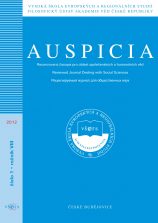Analýza vývoje HDI v postsovětských zemích v letech 1997 až 2007
Analysis of HDI Development in Post-Soviet Countries from 1997 to 2007
Author(s): Jana Borůvková, Bohumil MinaříkSubject(s): Economic history, Transformation Period (1990 - 2010), Human Resources in Economy
Published by: Vysoká škola evropských a regionálních studií, z. ú.
Keywords: Human Development Index; cluster analysis; convergence;
Summary/Abstract: In their analysis the authors stem from the internationally acknowledged Human Development Index - HDI, which they use to describe the development of the former USSR countries after its break up at the end of 1991. It is a composite indicator including three indices: the life expectancy index, the knowledge index (containing adult literacy index and school enrolment index) and the GDP index. Since 1990, HDI has been annually published in Human Development Report (HDR). For this analysis, the values of the HDI and its component values of the period from 1997 (HDR 1999) to 2007 (HDR 2009) were used. In order to map the development of the post-Soviet countries from 1997 to 2007, the following analyses were used: the cluster analysis, the time series development analysis, the convergence processes analysis, and the regression analysis. These analyses prove the hypothesis about a different development in individual post-Soviet countries after the breakup of the Soviet Union; moreover, the cluster analysis provides five groups of countries, very easy to interpret.
Journal: Auspicia
- Issue Year: 2011
- Issue No: 1
- Page Range: 128-136
- Page Count: 9
- Language: Czech

